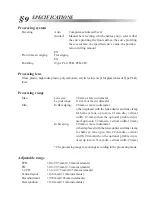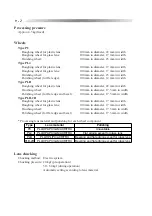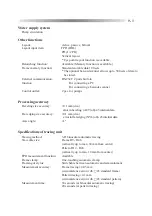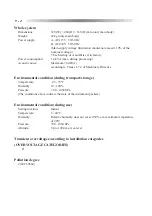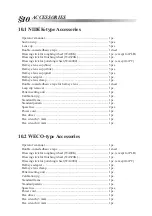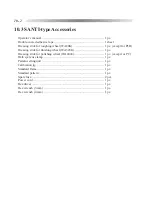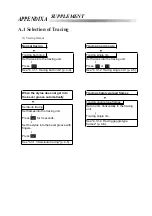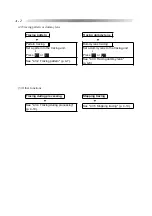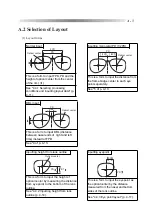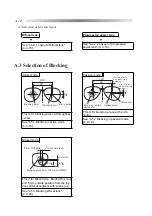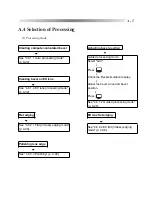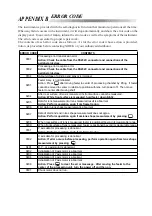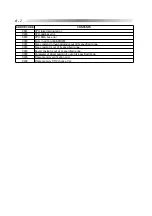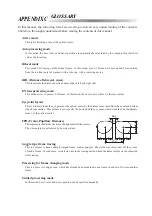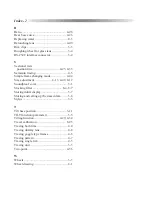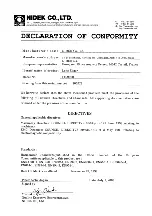
In this manual, the following terms are used to provide an easy understanding of the contents.
Therefore, thoroughly understand before reading the contents of this manual.
Active mode
This is for blocking a lens at the optical center.
Auto processing mode
In this mode, the bevel curve and bevel position are automatically calculated by the computer for their best
values of processing.
Bifocal mode
This mode is for laying out the bifocal lenses. In this mode, a lens is blocked at 5 mm up and 5 mm outside
from the top line center of segment with a lens cup, with a centering device.
DBL (Distance Between Lenses)
This represents the distance between nasal ends of left and right rims.
EX lens processing mode
This mode serves to process EX lenses. In this mode, the bevel curve will set to the rear surface.
Eye point layout
This is a form to input the eye points as the optical center by the distance measured from the nasal and bottom
side of lens outline. This form serves to specify the position of the eye point, which is marked on the dummy
lenses, as the optical center.
FPD (Frame Pupillary Distance)
This represents the distance between the right and left rim centers.
The rim centers are calculated by boxing system.
Goggle type frame tracing
This is a process to trace a sharply warped frame, such as goggles. The stylus may often come off the groove
of such a frame. In such cases, set only one rim in the tracing unit and hold the frame temple on the other side
while tracing.
Processing for frame changing mode
This is a process to edge a lens, which has already been mounted on one frame, in order to fit it into another
frame.
Guided processing mode
In this mode, bevel curve and bevel position can be specified manually.
APPENDIX C
GLOSSARY
DBL
FPD
Summary of Contents for LE-9000LX
Page 1: ...PATTERNLESS EDGER Model LE 9000LX OPERATOR SMANUAL ...
Page 17: ...2 9 Top view or or ...
Page 19: ...2 11 ...
Page 145: ......

